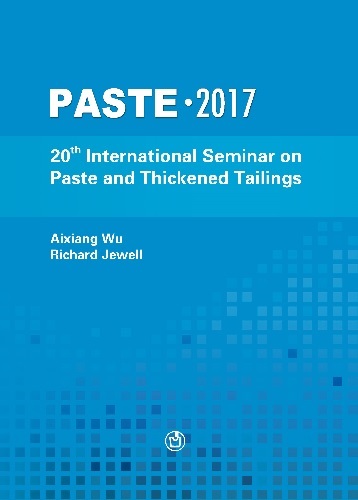Application of in-line polymer addition for tailings disposal-learning and challenges part II

|
Authors: Guang, R; Longo, S |
DOI https://doi.org/10.36487/ACG_rep/1752_41_Guang
Cite As:
Guang, R & Longo, S 2017, 'Application of in-line polymer addition for tailings disposal-learning and challenges part II', in A Wu & R Jewell (eds), Paste 2017: Proceedings of the 20th International Seminar on Paste and Thickened Tailings, University of Science and Technology Beijing, Beijing, pp. 371-379, https://doi.org/10.36487/ACG_rep/1752_41_Guang
Abstract:
The use of polyacrylamide-based high-molecular-weight polymer addition at the tailings storage facility (TSF) discharge locations has gained considerable interest in recent years. The intended result of implementing this technique is to have tailings slurry release clear water and create a steepened beach, compared to a conventional tailings slurry disposal method. This paper will focus on a study of a typical iron ore project which required improved water recovery. It has been suggested in previous studies that un-even shear on the polymer dosed tailings deposition on the tailings beach may be problematic. In this testing program, tailings and polymer mixture were tested for water release behaviour under partially sheared and fully sheared conditions. It is concluded that varying the shear regime affects the initial water recovery, up to around two hours after mixing and shearing. At the end of the test, the shear regime had less effect on the overall water recovery. A trade-off comparison between conventional slurry surface disposal and in-line polymer addition disposal is also presented in the paper. The trade-off study demonstrates that the in-line polymer addition technology could provide financial water-saving benefit.
References:
Guang, R., Tshibang, M., Loayza, C. 2014, ‘Application of in-line polymer addition for tailings disposal in Australia-learning and challenges’, 17th International Seminar on Paste and Thickened Tailings, Australian Centre for Geomechanics, Perth.
Revington, A., Sanchez, A., Wells, P. 2012, ‘Principles of TRO high density flocculation using a pipe reactor’, 15th International Seminar on Paste and Thickened Tailings, Australian Centre for Geomechanics, Perth.
© Copyright 2025, Australian Centre for Geomechanics (ACG), The University of Western Australia. All rights reserved.
View copyright/legal information
Please direct any queries or error reports to repository-acg@uwa.edu.au
View copyright/legal information
Please direct any queries or error reports to repository-acg@uwa.edu.au